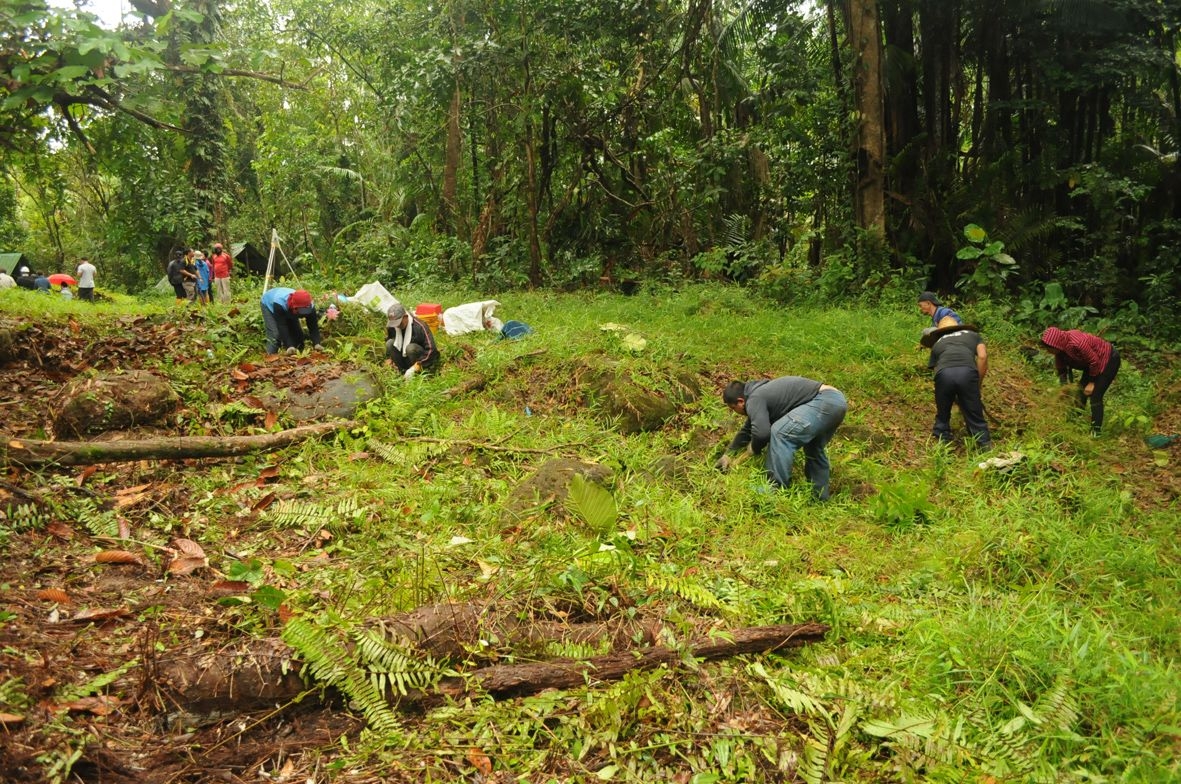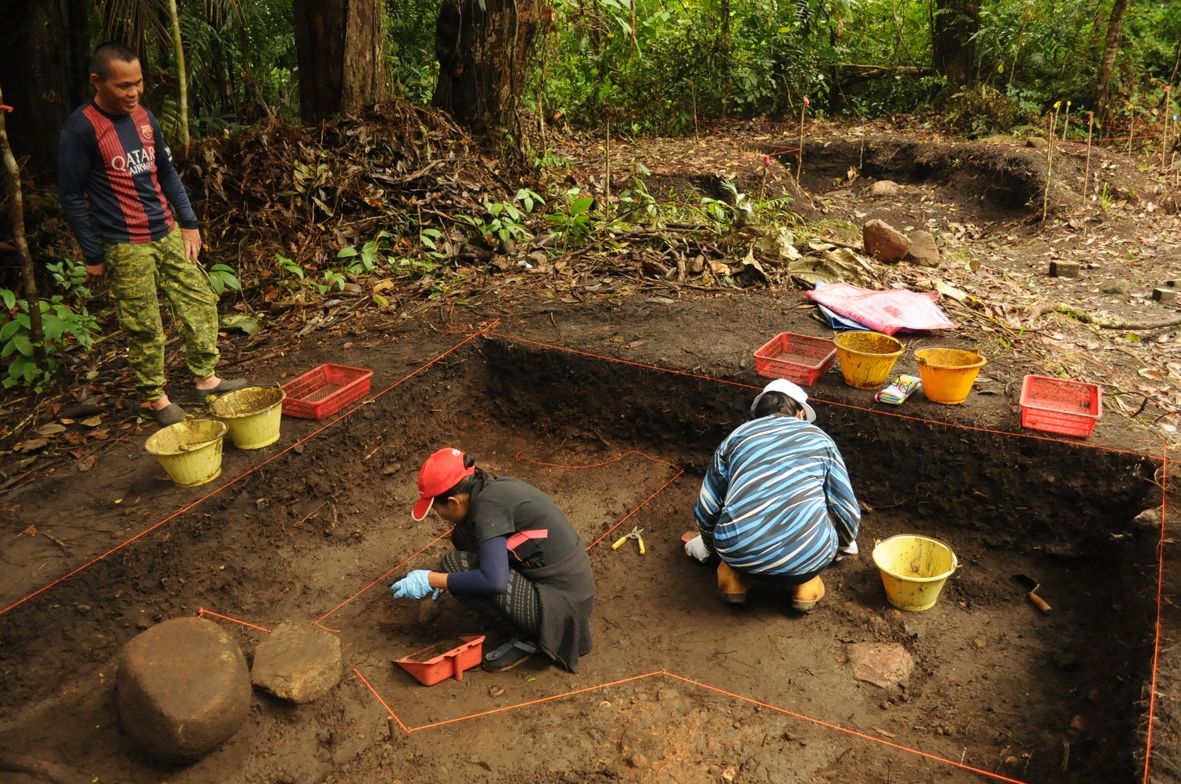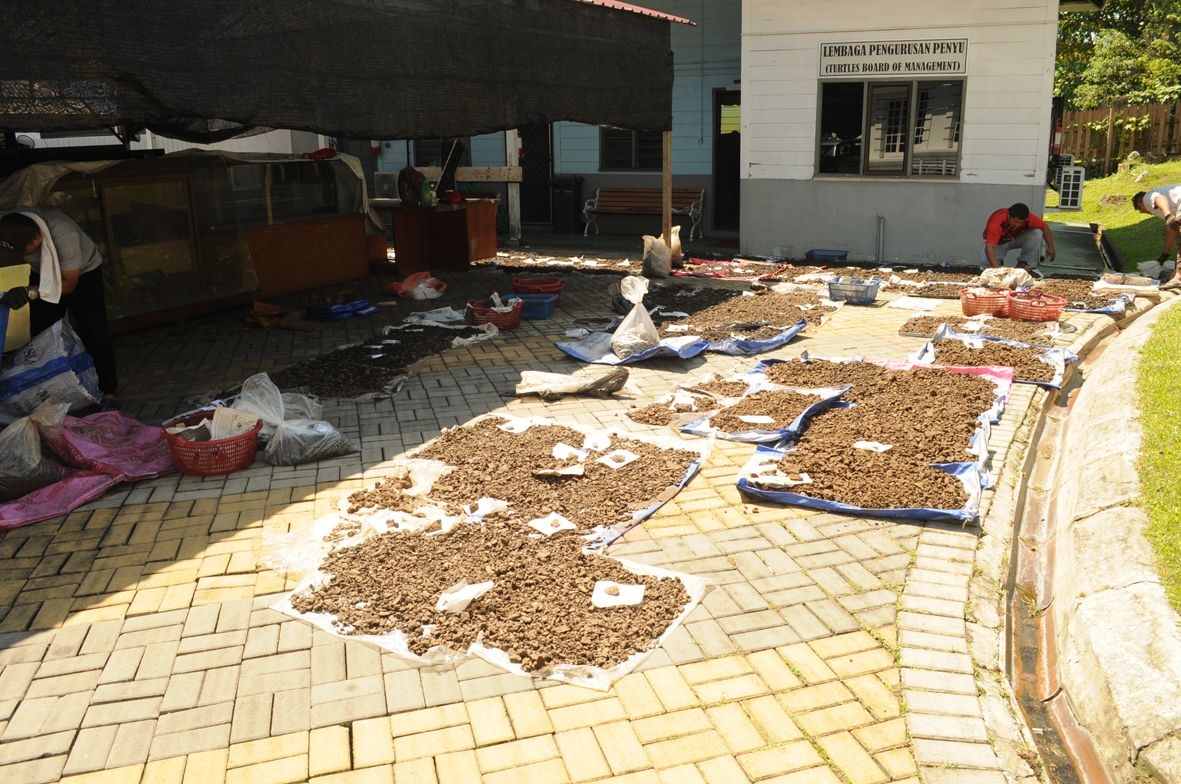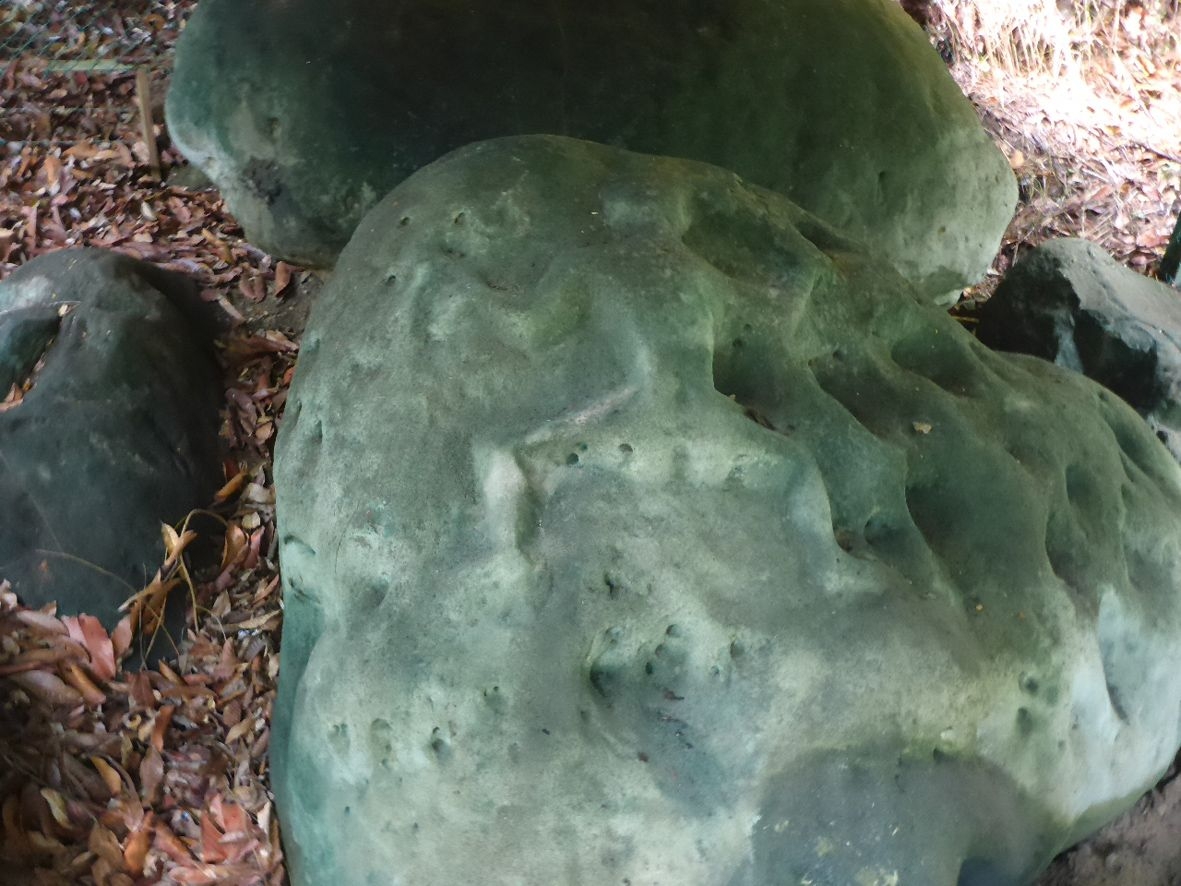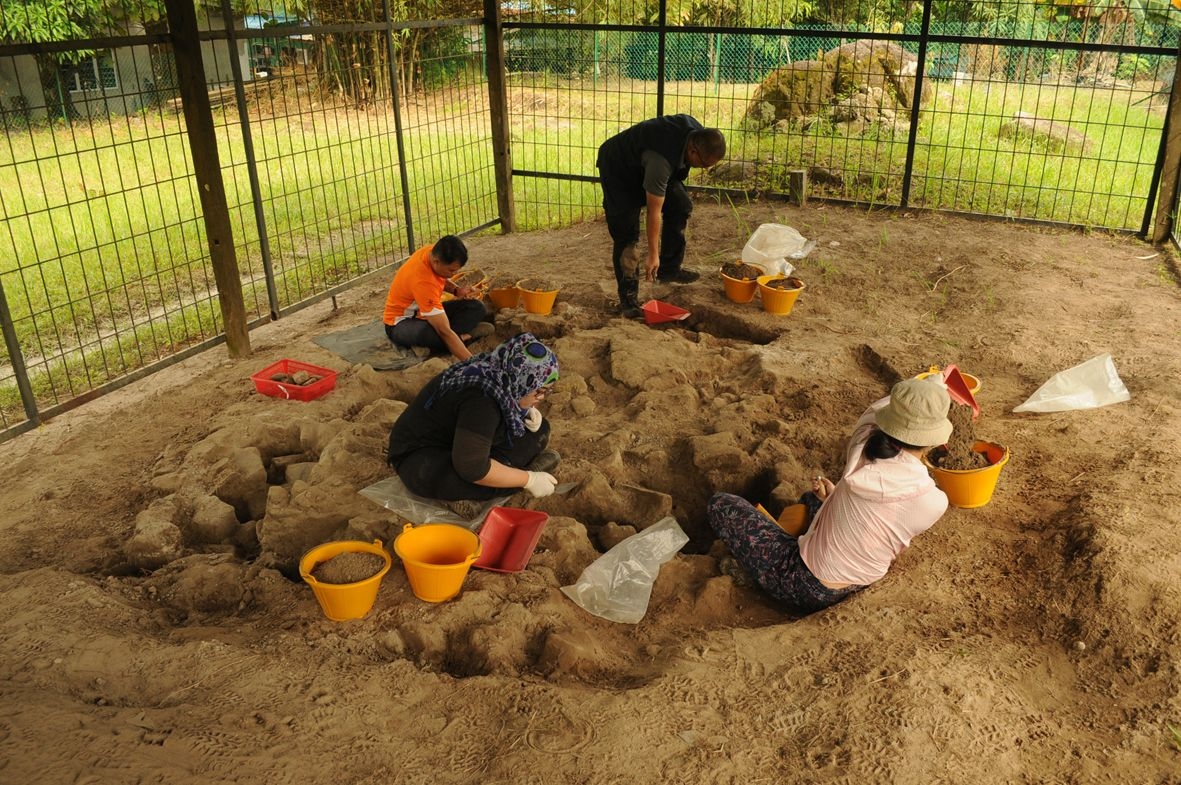Sungai Jaong & Bongkisam
Discovered in the 1950s, Sungai Jaong and Bongkisam at Sarawak (Malaysia) contain the remains, rare for this period in South East Asia, of an iron-reduction industry dating back approximately one thousand years, and the only - and perhaps oldest - Hindu-Buddhist monument in Sarawak.
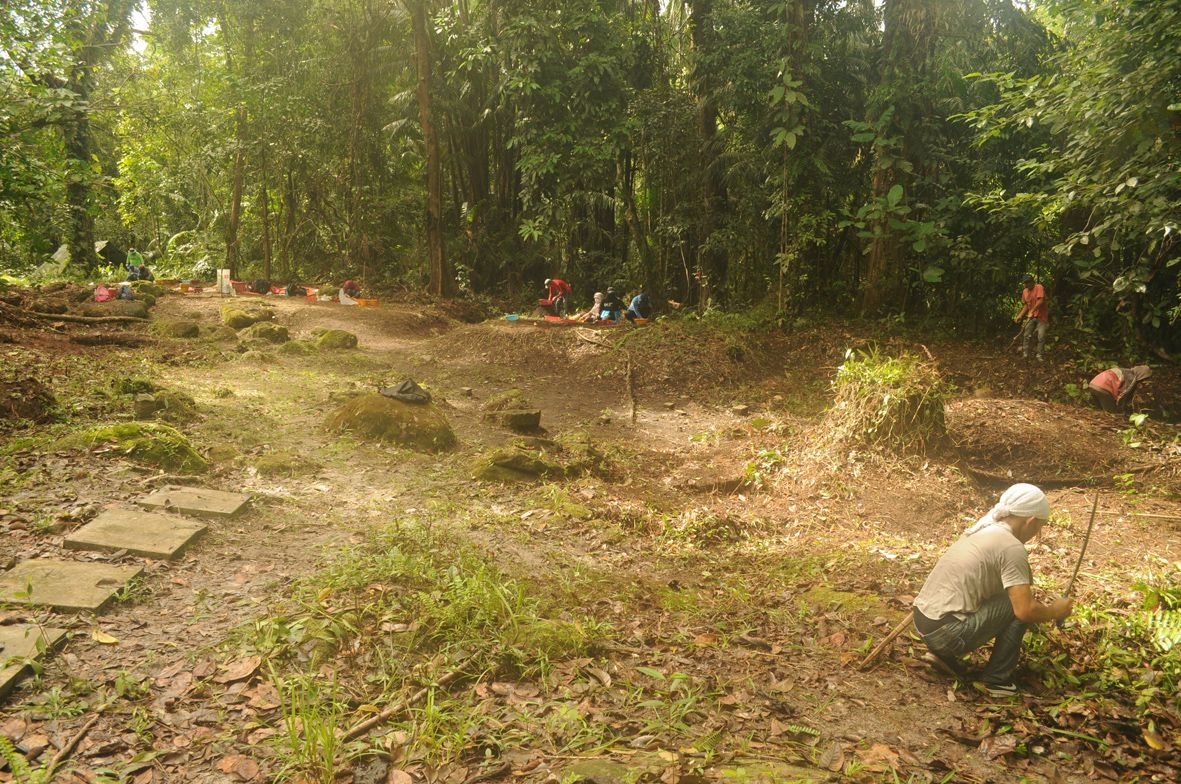
The archaeological mission in Sarawak, Malaysia is a cooperative effort between the Ecole française d'Extrême-Orient and the Sarawak Museum Department. Its primary aim is to resume research into sites in the delta of the Sarawak River, on the coast of the South China Sea, some 30 kilometres to the north of the State capital, Kuching.
Iron industry sites
Discovered and then partly excavated in the 1950s and 1960s, the sites of Sungai Jaong and Bongkisam are among a series of sites of outstanding archaeological interest, for two reasons. Firstly, they have revealed large quantities of remains related to iron-reduction processes, about which there are still gaps in our knowledge in South East Asia for the period under study, the 10th – 11th centuries, and even earlier. These remains are associated with the probable remnants of habitats, including Chinese ceramics.
The first excavations were carried out in Sungai Jaong in 2019 with promising results. The mission’s goals are to find out more about the site’s environment in history, determine the boundaries of the site and its timeline, perform a technical study of the iron industry to make comparisons with equivalent contemporary sites in South East Asia, or even further away, examine relations between the probable remains of the habitats and the remains of the iron industry, and determine the origin of the inhabitants, their way of life, and their contact with the outside world, both near and far.
A Hindu-Buddhist structure
The excavations carried out in 1966 at Bongkisam revealed a small Hindu-Buddhist stone structure, the only one of its kind found in Sarawak State. One of the aims of the programme is to resume research into these remains, from chronological, functional and symbolic points of view. What remained of the monument was exposed in 2018 with a view to placing it on public display.
Bringing heritage to life
The archaeological mission in Sarawak began at the same time as the creation of the Santubong Archeological Park managed by the Sarawak Museum Department. This included the construction of a small information centre on the edge of the site of Sungai Jaong, where selected remains and the findings of the archaeological mission will be presented. A display on the site itself will provide visitors will access to the excavation areas, and sculpted rock blocks cut and engraved with various types of representations that remain a mystery to this day.
A French-Malaysian mission
The mission is directed by Daniel Perret (EFEO) for the French team, and Mohd Sherman bin Sauffi (Museum Department of Sarawak) for the Malaysian team. Stéphanie Leroy (LAPA-IRAMAT, NIMBE, CEA, CNRS, Université de Paris-Saclay) has teamed up with the mission for the archaeo-metallurgy component, Zhao Bing (CNRS UMR 8155 – CRCAO, EPHE, Collège de France) for the study of Chinese ceramics, Yohan Chabot (postdoctoral student, ERC DHARMA, EFEO, CNRS-EHESS) for the palaeo-environmental component. The mission also aims to train staff from the Archaeology Unit of the Museum Department of Sarawak.
Until July 2019, the field works were carried out as part of the IRIS Etudes Globales funded by Idex PSL with the reference ANR-10-IDEX-0001-02 PSL*. They also benefitted from the financial support of the French Embassy in Malaysia and the EFEO.
The project is supported by the French Ministry for Europe and Foreign Affairs on the advice of the Excavation Committee (Commission des fouilles).


